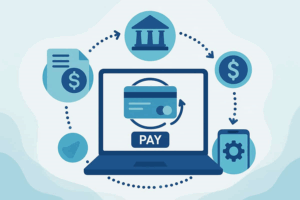
In today’s world, having fast internet is no longer a luxury—it’s a necessity. Whether it’s for work, staying connected with family, or streaming entertainment, reliable and speedy internet has become an essential part of daily life. However, achieving this level of connectivity without overspending can feel like a challenge, especially with so many options and providers in the market.
Fortunately, there are practical steps you can take to secure fast internet at rates that won’t break the bank. By comparing options, choosing the right technology, and leveraging innovative tools like esim, you can save money without compromising on speed or quality. Providers like Esimatic have made it easier than ever to access cost-effective data plans, offering solutions that cater to both casual users and heavy internet consumers.
Evaluate Your Internet Needs
The first step to getting fast internet at an affordable price is understanding your specific needs. Not everyone requires the same level of speed or data, so identifying your usage patterns can help you avoid overpaying for unnecessary features.
1. Determine Your Speed Requirements
Internet speed is measured in Mbps (megabits per second), and the amount you need depends on how you use the internet:

- 10–25 Mbps: Suitable for basic tasks like browsing, emailing, and light video streaming.
- 50–100 Mbps: Ideal for families, online gaming, and HD streaming on multiple devices.
- 200 Mbps or higher: Best for heavy users, 4K streaming, or households with multiple users and connected devices.
2. Consider Data Limits
Some providers offer unlimited data plans, while others impose data caps. If you’re a light user, a capped plan might save you money. For heavy users, unlimited plans can prevent overage charges.
Choosing the Right Internet Provider
Comparing internet providers is crucial for finding the best deal. Each provider has unique offerings, so doing your research can help you identify the one that fits your needs and budget.
1. Check for Local Providers
Start by identifying providers in your area. Local companies often offer competitive pricing and personalized customer service compared to national brands.
2. Compare Plans and Promotions
Many providers offer promotional rates for new customers, which can include discounted pricing, free equipment, or bonus features. Be sure to read the fine print to understand when promotional rates expire and what the regular charges will be.
3. Review Customer Satisfaction
Research reviews and ratings to gauge the reliability of a provider’s service. Consistent speeds, minimal downtime, and responsive customer support are essential factors to consider.
How eSIM Can Simplify Your Internet Access
One of the most innovative solutions for fast and flexible internet is the eSIM. Unlike traditional SIM cards, which require physical insertion into a device, eSIMs are built into your phone or tablet and can be activated digitally. This technology is particularly useful for accessing mobile internet while traveling or as a backup for your home connection.
1.What is an eSIM?
An eSIM (embedded SIM) eliminates the need for physical cards. It allows users to switch carriers and activate plans remotely, often by scanning a QR code or through a mobile app.
2. Benefits of Using eSIM for Internet Access
- Flexibility: Switch between networks or activate new plans without visiting a store.
- Convenience: Activate your internet service instantly, whether you’re at home or abroad.
- Affordability: eSIM providers, like Esimatic, offer competitive data plans tailored to different usage needs, helping you save money.
- No Roaming Charges: For travelers, eSIM allows you to connect to local networks at local rates, avoiding expensive roaming fees.
3. How Esimatic Stands Out
Esimatic provides a variety of affordable eSIM plans with fast activation and reliable connectivity. Their user-friendly platform ensures that both light and heavy internet users can find a plan that suits their needs, whether for a short trip or long-term use.
Optimize Your Home Internet
If you’re using home internet, there are ways to maximize your connection speed and get the most value out of your plan.
1. Upgrade Your Equipment
Old routers and modems may not support the latest internet speeds. Investing in modern equipment that supports standards like Wi-Fi 6 can improve both speed and reliability.
2. Position Your Router Strategically
The placement of your router affects its signal strength. Place it in a central location, free from obstructions like walls or furniture, to ensure even coverage throughout your home.
3. Use Ethernet for Key Devices
While Wi-Fi is convenient, connecting important devices like desktops or gaming consoles via Ethernet can provide faster and more stable speeds.
4. Reduce Interference
Other devices, like cordless phones or microwaves, can interfere with your Wi-Fi signal. Keeping your router away from such devices can enhance its performance.
Mobile Internet for On-the-Go Users
If you’re constantly on the move or live in an area with limited broadband options, mobile internet plans can be a practical and affordable alternative.

eSIM technology, in particular, makes mobile data plans more accessible and flexible.
1. Short-Term Plans for Travelers
Travelers can benefit from short-term eSIM plans, which provide access to local networks without the hassle of purchasing physical SIM cards in each country. This option is especially valuable for those visiting multiple destinations.
2. Unlimited Mobile Data
For users who rely heavily on mobile internet, some providers offer unlimited eSIM plans. These plans are ideal for streaming, gaming, or working remotely while on the go.
3. Backup Internet
Mobile internet can serve as a backup for your primary connection, ensuring uninterrupted service during outages. eSIMs make it easy to switch between networks when necessary.
Keep an Eye on Promotions and Discounts
Many internet providers offer seasonal promotions or limited-time discounts, which can significantly lower your costs.
1. Bundled Plans
Some providers offer bundles that include internet, TV, and phone services at a reduced price. Evaluate whether these bundles meet your needs to avoid paying for unnecessary features.
2. Referral Programs
Look for providers with referral incentives. By recommending their service to friends or family, you could earn discounts or credit toward your bill.
3. Cashback and Coupons
Some providers offer cashback for online sign-ups or coupons that can reduce your monthly cost. Take advantage of these deals to stretch your budget further.
Monitor Your Data Usage
Understanding how much data you use can help you choose the right plan and avoid unnecessary charges.
1. Use Provider Tools
Most providers offer apps or online dashboards where you can track your usage in real time.
2. Set Alerts
Many services allow you to set usage alerts, notifying you when you’re nearing your data limit. This helps you stay within your plan and avoid overage fees.
3. Optimize Data Use
Simple adjustments, like lowering video streaming quality or turning off automatic updates, can help reduce data consumption and extend your plan.















